Warehouse Only Mode (WMOM) for Dynamics 365 Supply Chain Management: A Total Guide
Understand Dynamics 365 Warehouse-Only Mode, from functionalities and benefits, to optimize warehouse operations, efficiency, & productivity.
Table of Content
Warehouse only mode functionality is now available in Dynamics 365 Supply Chain Management (D365 SCM). According to Microsoft: Warehouse management only mode lets you take advantage of the core warehouse management (WMS) functionality that Microsoft Dynamics 365 Supply Chain Management offers while you also continue to take advantage of your existing investments in third-party enterprise resource planning (ERP) and order management systems. Regardless of the ERP or ordering systems that you have in place, you can now quickly deploy our advanced WMS functionality without having to set up or maintain areas of Supply Chain Management that you don’t need. You’re then ready to benefit from advanced WMS features such as automation integration, carrier integration, and the Warehouse Management mobile app.
The integration of Dynamics Supply Chain Management WMS functionality with external ERP and ordering systems is made possible by lightweight source documents that are dedicated to inbound and outbound shipment orders. Because these documents focus exclusively on warehouse management, they can replace multiple types of more general-purpose documents (such as sales orders, purchase orders, and transfer orders) from a pure warehouse management perspective.
Scenarios to Use Warehouse Management Only Mode
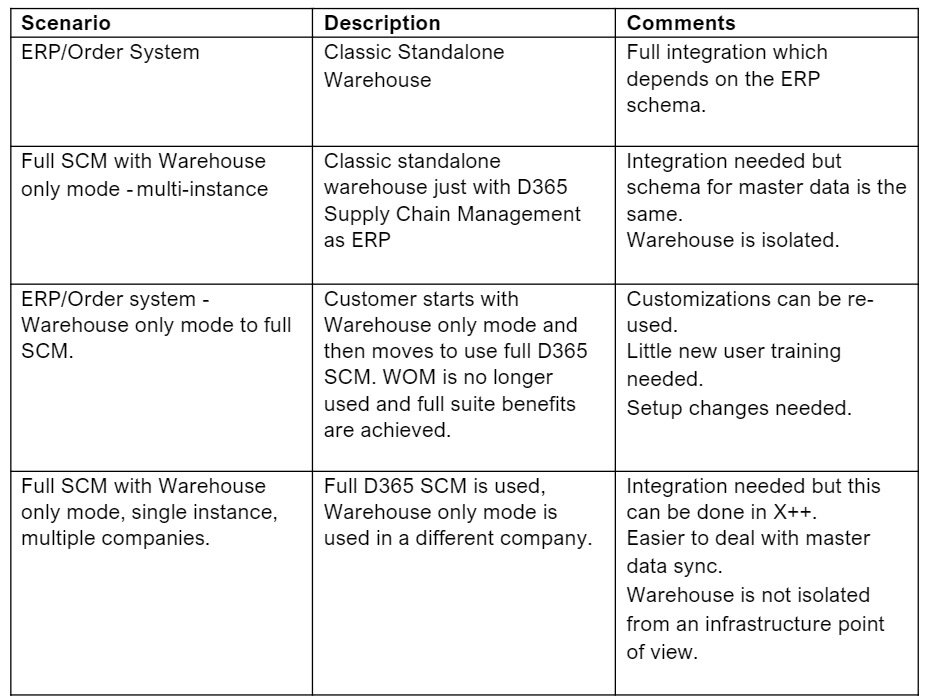
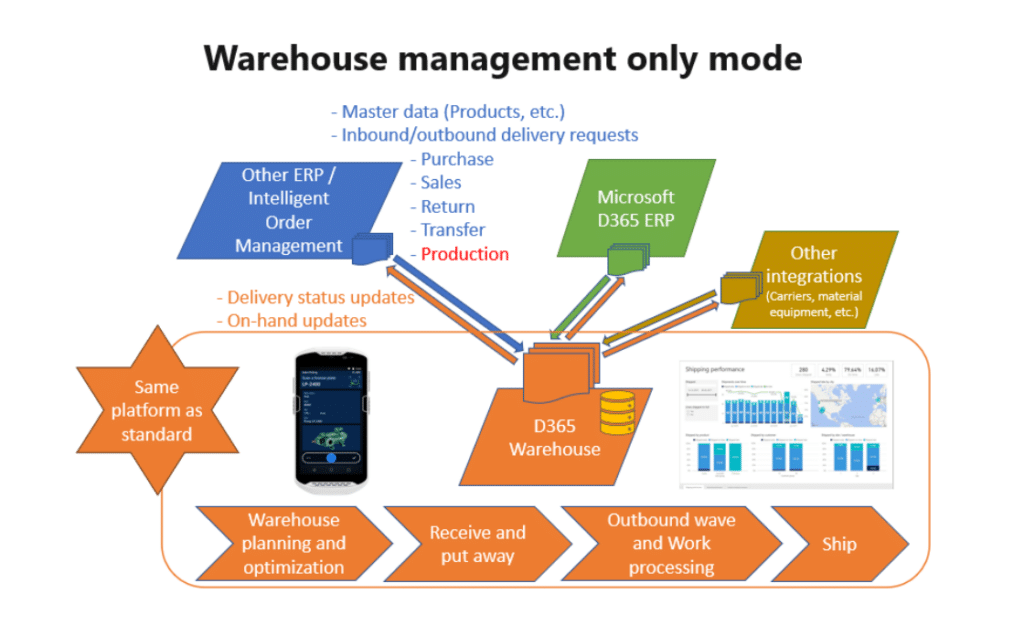
The following illustration highlights the shipment outbound process. Let’s walk through how the outbound process works within the system and how to set it up.
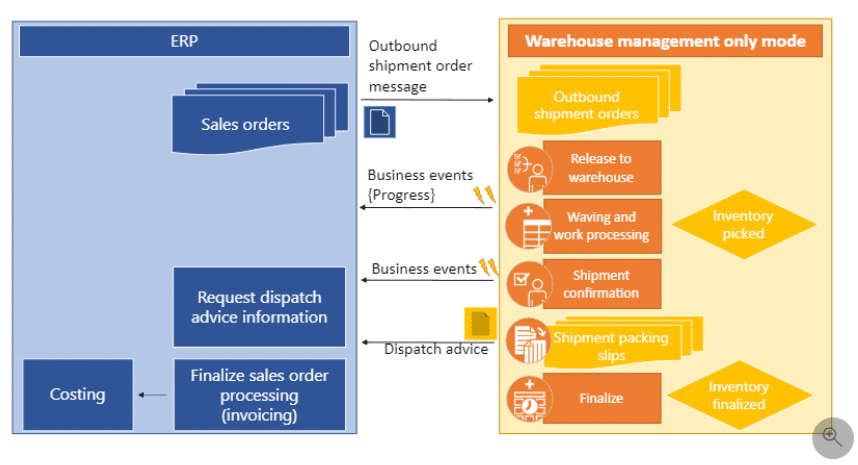
1. The external system submits the ‘outbound shipment order messages’ to Supply Chain Management. This case I am going to use Postman to post the create the ‘Outbound Shipment Order Message’.
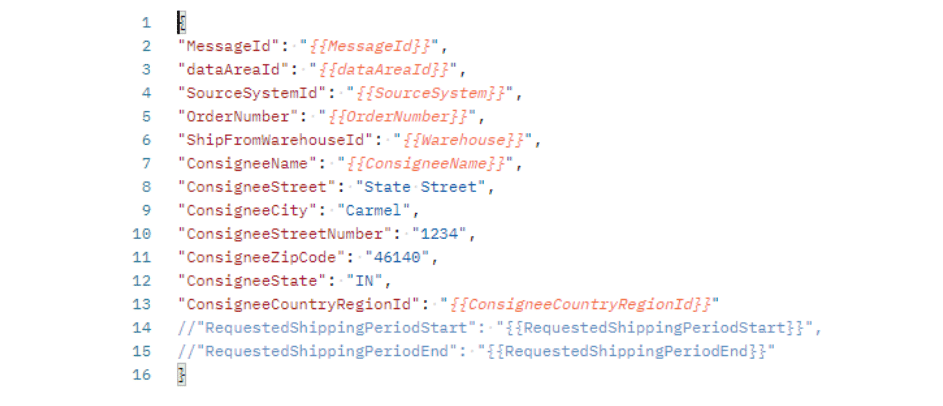
2. Which will create the Outbound Shipment Order Message Header in Supply Chain Management. Navigate to Warehouse Management > Inquiries and Reports >Outbound Shipment Order Messages.
 3. The external system submits the ‘Outbound shipment order message Lines’ to Supply Chain Management. This case I am going to use Postman to post the create the ‘Outbound Shipment Order Message Lines’.
3. The external system submits the ‘Outbound shipment order message Lines’ to Supply Chain Management. This case I am going to use Postman to post the create the ‘Outbound Shipment Order Message Lines’.

4. This will create the lines on the Outbound Shipment order in Supply Chain Management. Navigate to Warehouse Management > Inquiries and Reports > Outbound Shipment Order Messages.

5. The external system submits the ‘Complete Outbound’ to process the order in Supply Chain Management. Navigate to Warehouse Management > Inquiries and Reports > Outbound Shipment Order Messages. Process button will be enabled.
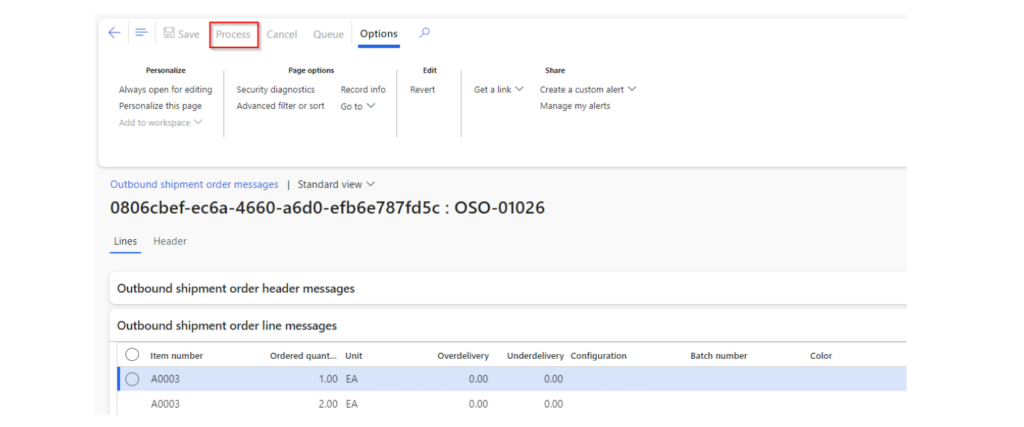
NOTE: This will trigger a business event letting the external system know that the status has changed.
6. Navigate to Warehouse Management > Inquiries and Reports > Outbound Shipment Order Messages. Select the order that was newly created and in the Action pane click ‘Process’. By clicking process, this will create an Outbound Shipment order.

7. Navigate to Warehouse Management > Inquiries and Reports > Outbound Shipment Orders to view the Shipment orders that were created.

8. Reserve the inventory manually. Click on the Inventory > Maintain > Reservation. In the Action pane click Reserve lot. Repeat this for all the items.
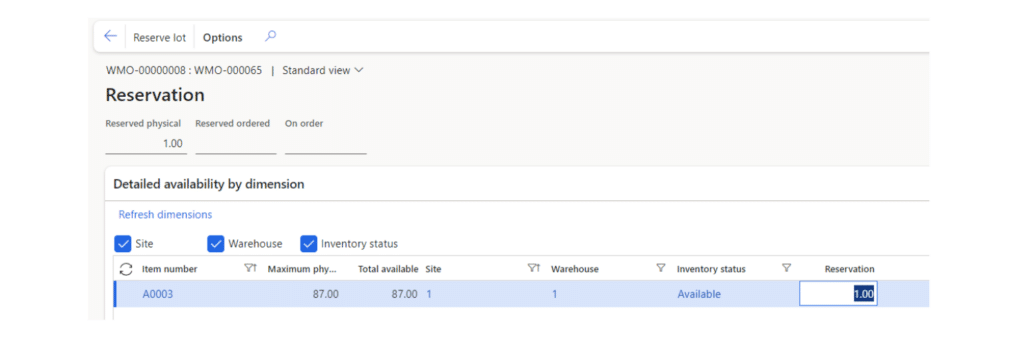
9. Release the order to the warehouse to create the load, work and wave. In the Action Pane click Warehouse > Actions > Release to Warehouse.
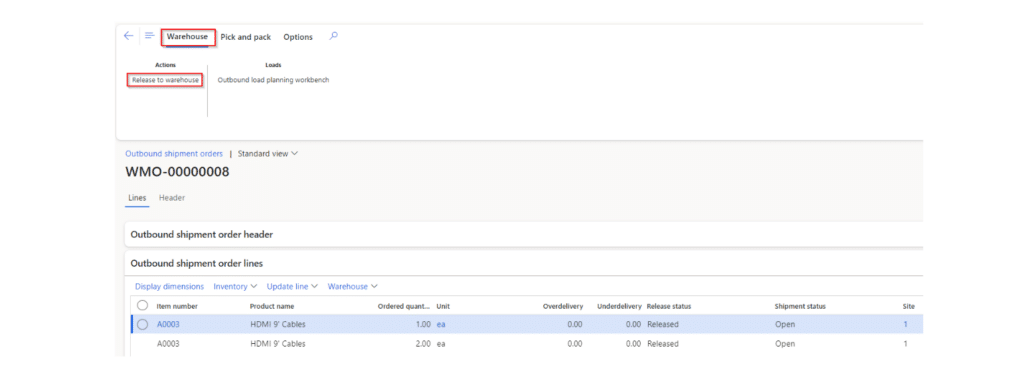
10. Load will be created as well. You can find the load by Navigating to Warehouse Management > Loads > All Loads.

NOTE: This will trigger a business event letting the external system know that the wave execution was successful.
11. Log into the Warehouse Mobile Application to pick the inventory from D365. When logged in, select the ‘Outbound’ mobile device menu item.

12. Select one of the following mobile device menu items to receive the inventory. In this case, I am going to ‘OSO System Picking’.
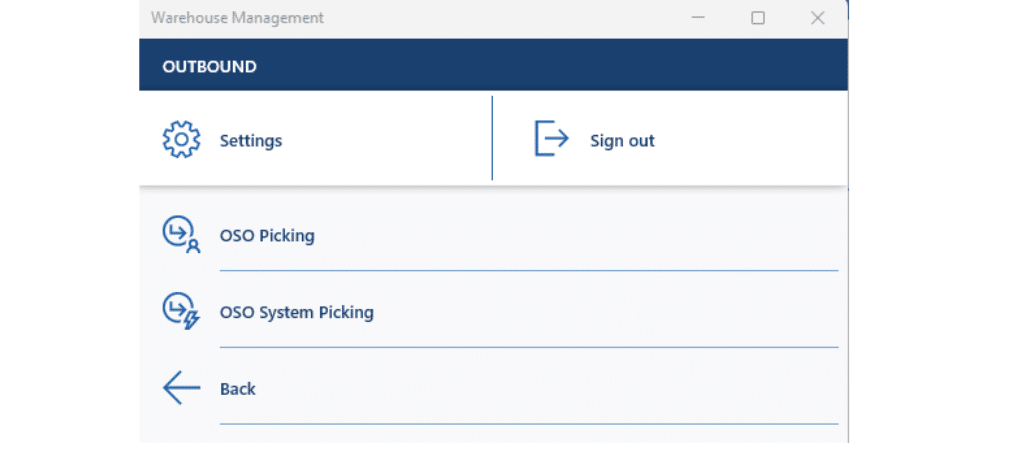
13. Confirm the values, that you are picking, this will appear for all the items you are picking.
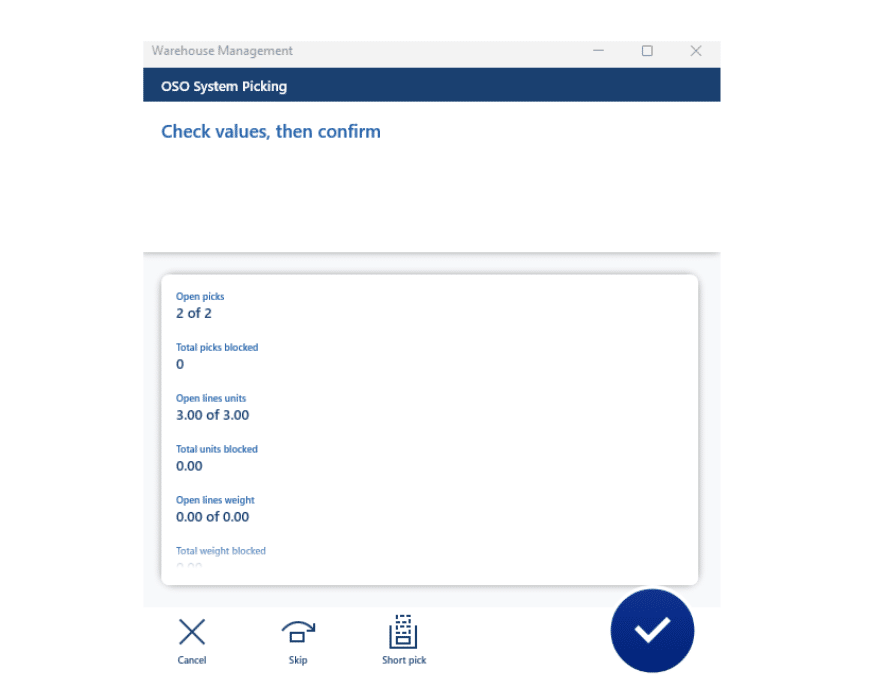
14. Next, you will deliver to the put location. This will default based on the setup we did originally.
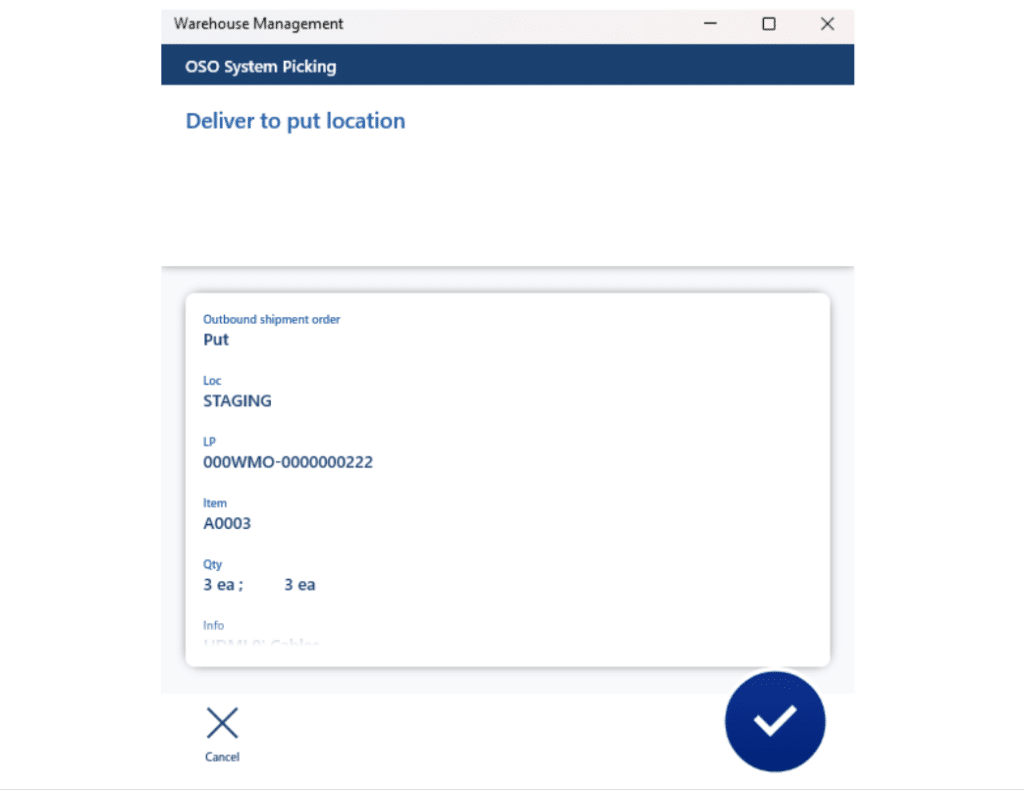
15. Work has been completed. Repeat for additional items.
16. The load will be in loaded. To view the load, navigate to Warehouse Management> Loads > All Loads.

17. Confirm the load by navigating to Warehouse Management >Loads > All Loads. In the Action Pane click Ship and Receive > Confirm > Outbound Shipment.
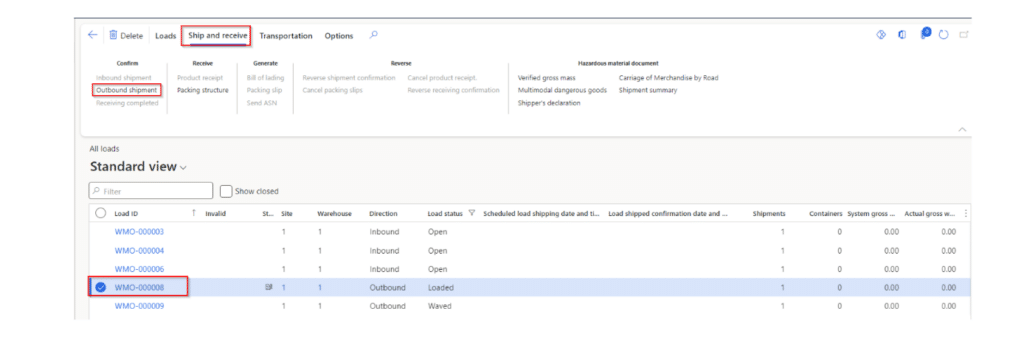
18. Inbound Shipment order has been received. Navigate to Warehouse Management > Inquiries and Reports >Outbound Shipment Orders.

19. Shipment Packing slip is posted. Navigate to Warehouse Management > Inquiries and Reports > Outbound Shipment Order. In the Action Pane click pick and pack > Journal à Journals > Shipment Packing Slips.

NOTE: This will trigger a business event letting the external system know that the shipment is created.
20. Inventory has been picked from the system. If you log into D365, navigate to Inventory Management > Inquiries and Reports > On-Hand List.

There is a spot in D365 to monitor the integrations as well. Navigate to Warehouse Management > Warehouse Integration Monitoring.
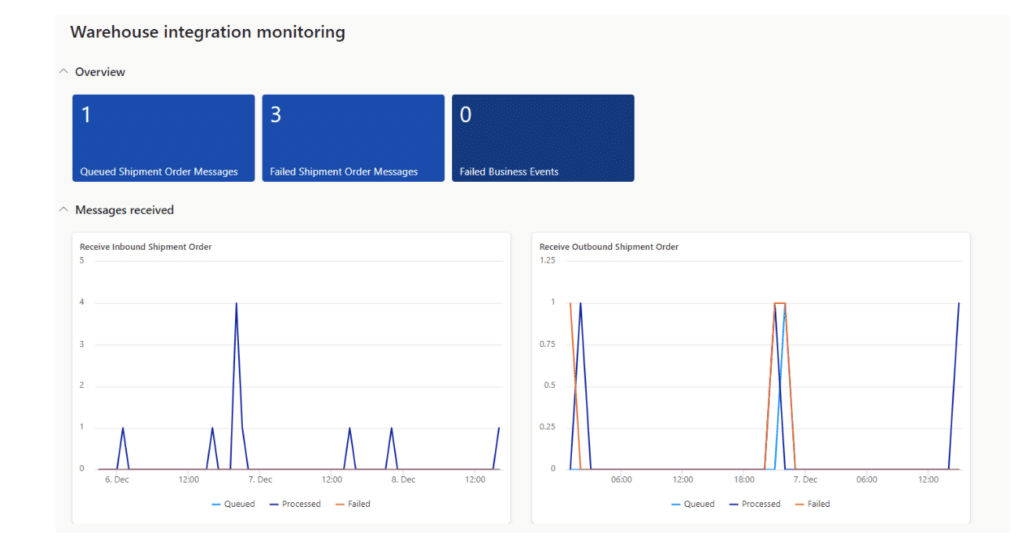
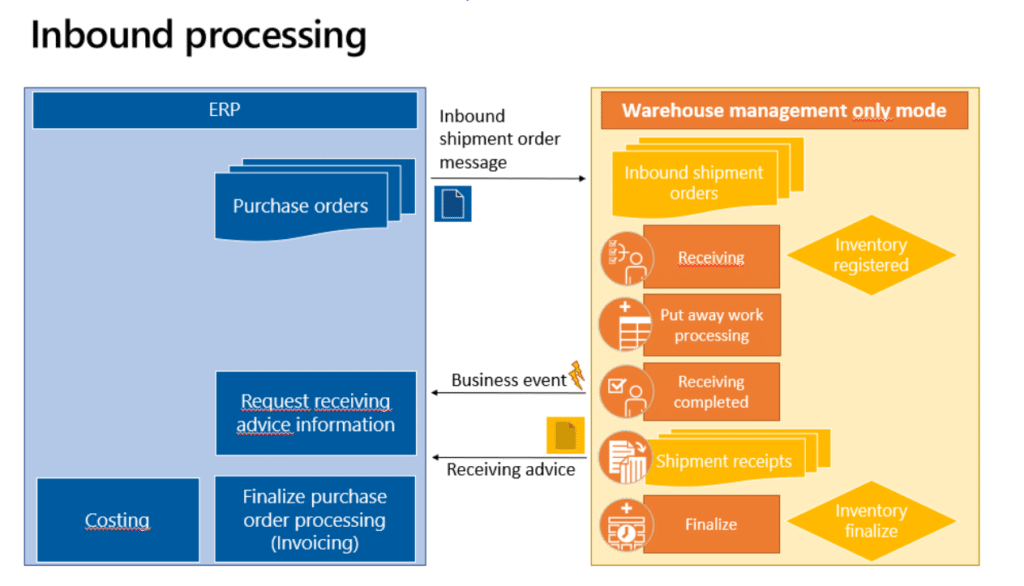
The illustrations here showcase the workflow in the inbound shipping process.
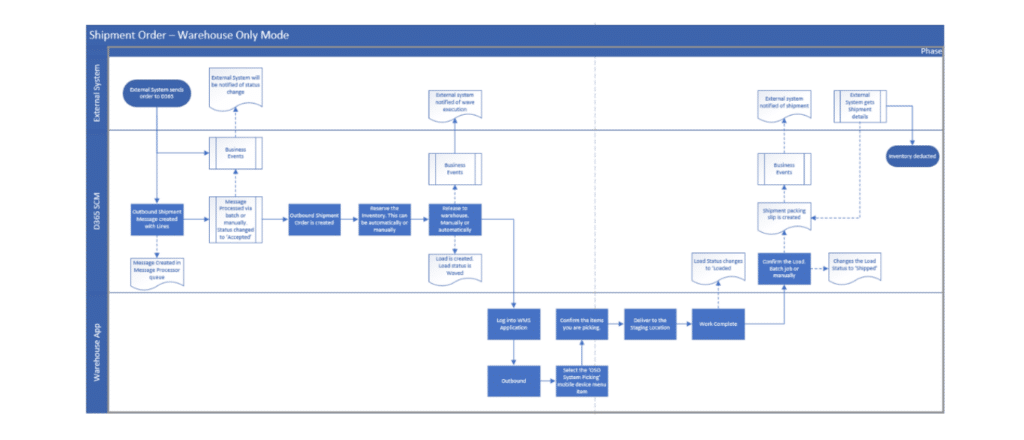
To learn more about the standalone Warehouse Management Only Mode solution from Microsoft, reach out to the team at Velosio.
Talk to us about how Velosio can help you realize business value faster with end-to-end solutions and cloud services.